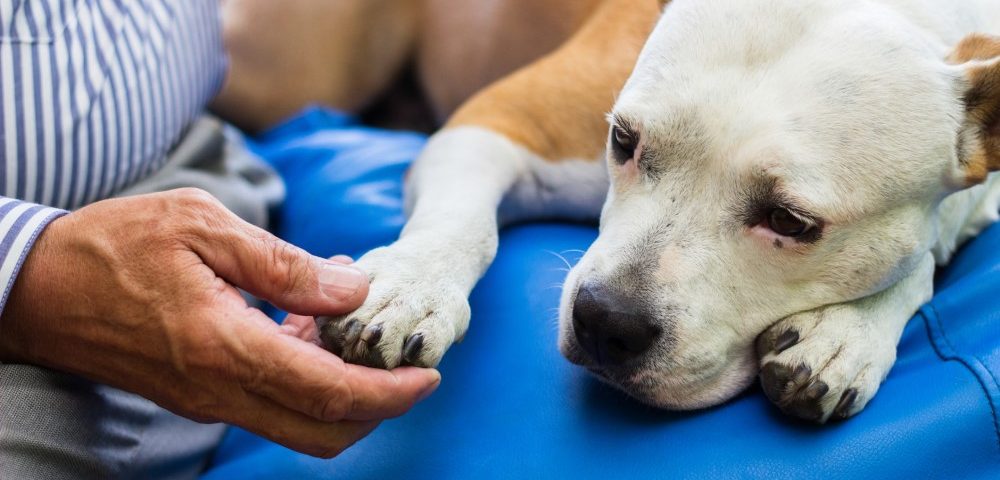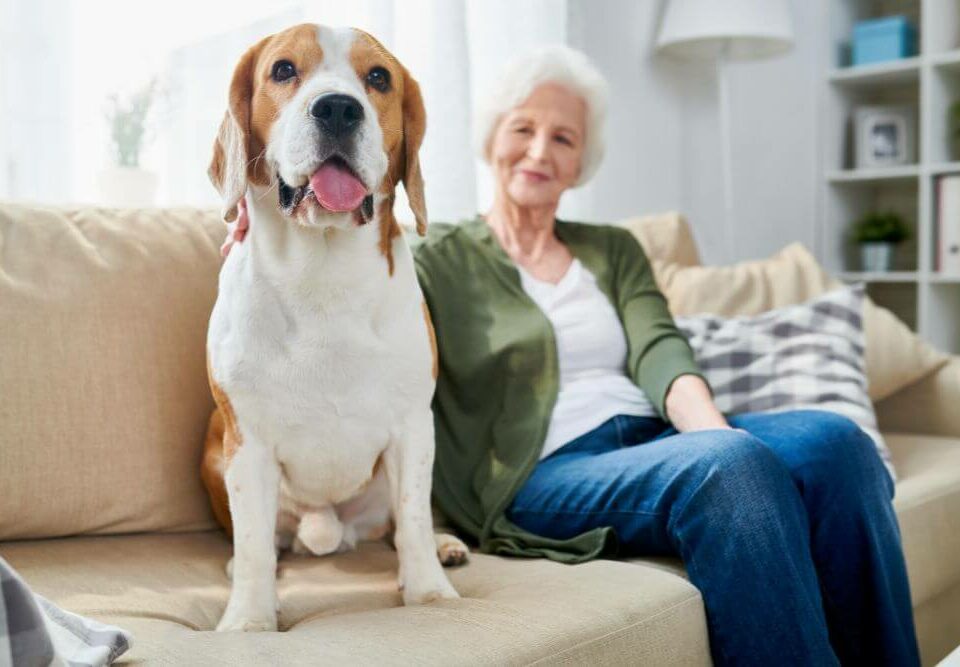
Recognizing the Final Stages of Canine Diabetes
September 6, 2023
How Long Do Rabbits Live
December 7, 2023Pheochromocytoma is a term to describe a tumour that comes from the adrenal gland and secretes hormones. It can be challenging to diagnose, especially as they are considered uncommon in dogs. It may be a condition that you have never heard of until recently and you may have many questions regarding the condition and available treatments.
Table of Contents
- What is Pheochromocytoma in Dogs
- What Causes Pheochromocytoma in Dogs?
- Early Symptoms of Pheochromocytoma in Dogs
- How to Diagnose pheochromocytoma in Dogs
- How is Pheochromocytoma in Dogs Treated?
- How Long Can Dogs Live with Pheochromocytoma
- What are the Warning Signs of Pheochromocytoma in Dogs?
- Making the Tough Decision: Should you put to sleep a dog with Pheochromocytoma?
- Caring at Home Gentle Euthanasia
- Frequently Asked Questions (FAQs)
What is Pheochromocytoma in Dogs?
Pheochromocytoma is a tumour arising from the adrenal medulla (middle part of the adrenal glands) that secretes hormones (an endocrine tumour). The adrenal glands can be found on top of the kidney on each side of the body.
Abnormal growth of a type of cells known as chromaffin cells causes the formation of a tumour. Unfortunately, these cells make hormones adrenaline and noradrenaline, which help to regulate functions in the body, and are involved in “fight or flight” reactions. It is a rare tumour in dogs but can be found incidentally. Unfortunately, it is a malignant tumour, which means it can spread elsewhere in the body with 20-40% of dogs having evidence of the tumour elsewhere in the body at the time of diagnosis.
What Causes Pheochromocytoma in Dogs?
There is no specific known cause for pheochromocytoma in dogs. It is not a genetic or hereditary condition. It affects middle aged to older dogs but both males and females are equally affected. There are no breed predispositions and it is a rare condition in dogs.
Early Symptoms of Pheochromocytoma in Dogs
The symptoms of pheochromocytoma are often subtle and may not be noticed initially. Many of the clinical signs can also be seen in a wide range of other diseases. The symptoms may only appear periodically, and include:
- Weight loss
- Weakness
- Collapse
- Loss of appetite
- Panting
- Hypertension (high blood pressure)
- Dyspnoea (difficulty breathing)
- Tachycardia (increased heart rate)
- Excessive thirst and urination
- Pacing
- Seizures
- Vomiting
- Abdominal distension
- Anxiety
- Diarrhoea
How to Diagnose pheochromocytoma in Dogs
Diagnosis can be challenging, especially as this condition is so rare. The veterinary surgeon will ask questions in order to gather all of the relevant history relating to your pet. They will do a full clinical examination, including checking heart rate and rhythm, respiratory rate and rhythm, and temperature.
A blood pressure measurement and some blood and urine tests may be performed to rule out other potential causes. Once suspicion is raised of an adrenal disease based on initial tests, history and examination, then imaging is required to physically find the mass. Ultrasound or advanced imaging such as a CT scan may be needed to find a mass. Of course there are other causes of adrenal masses, some of which are far more common, and so these would need to be excluded first. A biopsy can also be performed to obtain a sample for analysis and diagnosis. Sometimes staining, called immunohistochemistry, can be used to identify the cells from a biopsy and therefore diagnose a pheochromocytoma.
Often, advanced imaging, such as CT scan, will also be used to check if the tumour has spread to other parts of the body such as the lungs which is, tragically, common.
How is Pheochromocytoma in Dogs Treated?
Treatment of pheochromocytoma can involve a number of things: firstly, supportive care. Ensuring your dog has the correct nutrition, and that they are eating, drinking and toileting as normal is important. Medications to reduce blood pressure or treat the elevated heart rate can be used prior to surgery or to prevent further problems arising. Chemotherapy agents can be used for tumours that are inoperable (due to a very large size, or the fact they have spread elsewhere, or are invading local blood vessels).
Surgery is the main treatment option, although treating beforehand with a medication to reduce heart abnormalities, as mentioned above, can be important. The affected adrenal glands will need be removed surgically. Fortunately, a dog can live quite happily with only one, once their body gets used to the difference.
Nutrition is very important to help prevent your dog from losing too much weight. They need to maintain an appropriate weight, with an active immune system, allowing the body to be in the best situation prior to surgery. An appropriate number of calories needs to be consumed per day and so meals need to be well balanced. If your pet is struggling with eating, feeding tubes or specialist diets higher in calories can be used to help.
At home, you can ensure your dog gets fresh air, good rest and good nutrition to help them. Ensure you are giving any medication as directed from your vet.
How Long Can Dogs Live with Pheochromocytoma?
The prognosis with complete resection (removal of the tumour) is good and the life expectancy for dogs with a pheochromocytoma can be a number of years. Sadly, it can recur at another time in their life, so it is important to keep monitoring them.
If the tumour has spread elsewhere in the body, or infiltrated (invaded) the major blood vessels next to the adrenal glands, then the prognosis is not as good. If your dog doesn’t improve following surgery, then the next step is to discuss potential chemotherapy agents that may be suitable, including some of the newer oral tablets and metronomic therapy (to reduce blood vessel and tumour growth). The data for the use of these options is limited against this type of tumour.
If they don’t improve, then continuing on medication to help reduce clinical signs may be recommended to ensure a good quality of life. However, unfortuantely these tumours are aggressive, and this is essentially palliative care: keeping them as comfy as possible for as long as possible.
What are the Warning Signs of Pheochromocytoma in Dogs?
The final stages of pheochromocytoma can be a complete refusal to eat anything, weakness, or inability to get up. If the tumour ruptures, then a sudden collapse may occur, alog with pale gums or even sudden death.
Abdominal distension often is a later sign seen, due to enlargement of the tumour, and at this stage it is likely to have infiltrated or spread elsewhere. A sudden onset of breathing difficulty is also a final stage that can be seen.
Making the Tough Decision: Should you put to sleep a dog with Pheochromocytoma?
The prognosis with an early diagnosis and surgery is good, as discussed above. However, if discovered late or if surgery is not an option, then the prognosis is much worse and therefore euthanasia is a viable option.
If, despite medication and/or surgery, your dog does not seem to be improving or displaying the warning signs listed, then considering euthanasia is a good idea. Having a good understanding of your dog before diagnosis (when well) will help to decide if it is the right option to euthanise. Knowing that your dog is getting weaker and not improving means the time is close, and you have a big decision to make.
Our online quality of life checklist tool can help you with this, if you’re struggling to decide whether or not it’s time.
Caring at Home Gentle Euthanasia
Making the difficult decision to euthanise and say goodbye to your pet is extremely difficult. Some signs to look for that may suggest that it is time are: not eating at all, quietness, weakness, inability to stand, or unawareness of surroundings. If your dog is showing signs of a poor quality of life, or that their quality of life has got much worse and they are sadly having more bad days than good, it is time to say goodbye.
Euthanasia at home gives your dog the chance to be stress free in their own environment, allowing them to remain calmer and in a familiar surrounding at a difficult time. They can enjoy a few treats and be cuddled and stroked during the process. The vet will ensure everything is calm for your pet. Sometimes, a injection of a sedative is given beforehand to allow your pet to get super sleepy before the final injection is given. The final injection stops your pet’s heartbeat and is a peaceful way to say goodbye while being with you.
After your pet has peacefully passed away, there are many options for the next steps and these can be discussed with you.
Frequently Asked Questions (FAQs)
How long will a dog live with a pheochromocytoma?
If surgery is performed, they can live a number of years. Without surgery or if signs of spread it may only be a few months.
What causes pheochromocytoma in dogs?
The exact cause is unclear, but the adrenal gland tumour forms and can secrete a mixture of hormones. Uncontrolled release of these hormones leads to the symptoms we see.
What are the symptoms of pheochromocytoma in dogs?
Anorexia, weight loss, weakness, collapse, breathing difficulty, diarrhoea and vomiting are among the clinical signs we see.
How is pheochromocytoma diagnosed in dogs?
Imaging with a CT scanner or ultrasound, and examination of a biopsy are usually the best way to diagnose.
What are the symptoms of adrenal gland tumour in dogs?
They can be found incidentally with no clinical signs or they can cause symptoms such as weight loss, anorexia, weakness, collapse, diarrhoea and vomiting to name a few.





